Pergola Footing: Depth, Anchors, & Options
Author: Rick Worst | Editor: Omar Alonso
Review & Research: Jen Worst & Chris Miller
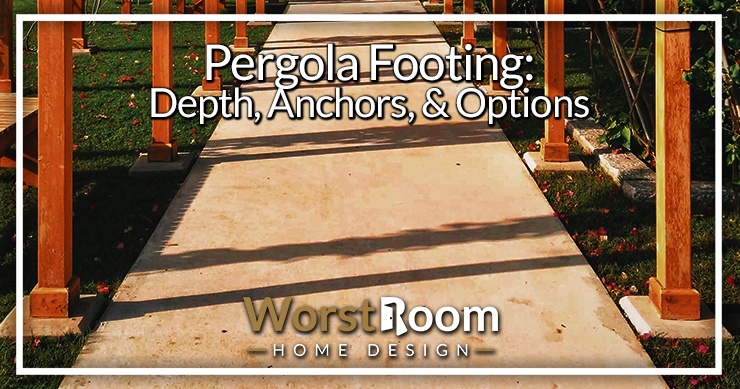
A pergola is meant to be a focal point of any garden. It can elevate a space. But imagine if you do not set it well enough and it falls over due to wind or shifting earth underneath it. That would be a disaster in every definition of the word. So, is a pergola footing a required thing or not?
We will discuss everything you need to know about pergola footings, from the options to the requirements and even the depth you need.
Another common question is whether they should be in-ground or on concrete. Surprisingly, there is no right answer. Intrigued? Let's get started, then.
Does a Pergola Need Footings?
The short answer is yes, they need footings. Pergolas are very heavy. Some might just allow the weight of the pergola to support itself. But that’s very risky and not advisable at all. As the height of the pergola increases, so does the center of gravity, making it easier to be blown over.
Since a pergola reaches well above the ground, at least 8 feet at a minimum, you need to set them solidly in-ground or on concrete to ensure safety. The footing is mostly for the posts which keep the actual pergola upright. So, you will need to support the posts to keep the whole structure rigid.
Do Pergolas Need to be Anchored?
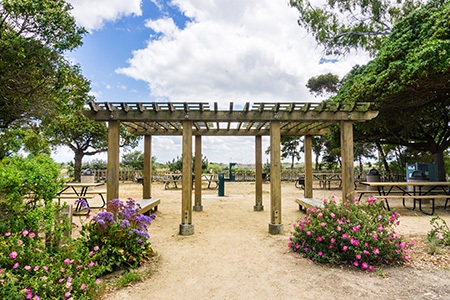
Yes, absolutely. Just having footings for your pergola isn't enough. They need to be anchored to the ground firmly, whether that's earth or concrete. This ensures they’re stable and solidly planted. Without them being properly anchored, they can slip around or be blown by heavy gusts of wind.
This can cause the whole pergola to topple over and if it does so over someone, it can hurt them. Plus, you’d need to spend money all over again to set it up the right way. Once you set a pergola, you want it to stay there. That’s why it’s better to do it the right way the first time.
So yes, you should always anchor your pergola just for its safety and long-term strength. There are a couple of ways to do this. But more on that a bit later. Just remember, the taller your pergola is and the broader, the more important it is for the footings and structural beams (especially the most load-bearing ones) to be very substantial.
Pergola Posts In-Ground or on Concrete?
There is a bit of debate when it comes to whether the posts should be in-ground or on concrete footings. Burying them under concrete in-ground will give you more strength. That is good for long-term durability and stability. Your other option are concrete footings for pergolas above ground, anchored to an existing concrete pad.
But you can get by just fine if you plan to bury it in the ground or use concrete footings above ground with anchors. You just need to use the right tools and methods. Plus, burying it gives the posts a seamless look. It’ll flow very nicely as a single unit. And you won't have any unsightly pergola footings sticking up off the pad.
There is no right or wrong answer here, like asking if you should screen in your pergola. If you like a concrete floor under your pergola, your posts need to be on concrete. And if you want a deck or patio under it, then it is best to put the post underground and then build a porch on it.
However, there are some concerns if you live in a high rainfall area. Your posts can rot. To tackle this, you need to use gravel or mulch to keep the buried posts safe and sound. And also, if you want a porch or deck under your pergola, burying the posts under the ground is the way to go. It will look just so much smoother.
How to Anchor a Pergola Properly
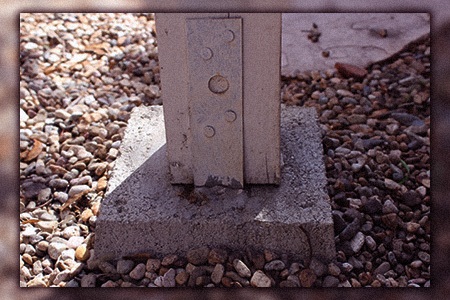
Here's a quick guide on how to anchor your pergola both in-ground and on concrete. Before you start digging with any types of digging tools at all, you should call your local authorities for permission. Ask if there are any underground utilities or pipes. If you get the go-ahead, then you're golden.
Anchoring a Pergola to the Ground
Let’s see how you’d anchor it to the ground first. There are 3 main steps to follow. Here’s what you need to do.
Step 1: Marking Your Holes
You’ll need to dig the holes for your pergola posts, with each being at least 12 inches in diameter. The depth needs to be one-third of the posts.
Step 2: Preparing Concrete
This step is super simple. Open up your concrete bags and prepare a batch. You’ll find perfectly good directions at the back of the package. After following the instructions, you’ll end up with wet concrete.
Step 3: Pour the Concrete into the Holes
Simply pour a layer of concrete of hole 4 to 6 inches into the bottom of the hole. Then stand one post. Now, you'd want to pour about a 12-inch layer of wet concrete.
Align all sides with the shape of your pergola and use a level to check whether it’s plumb or not. Keep adjusting till it’s perfectly plumb. Then just repeat the same process for the remaining holes.
Anchoring a Pergola to Concrete
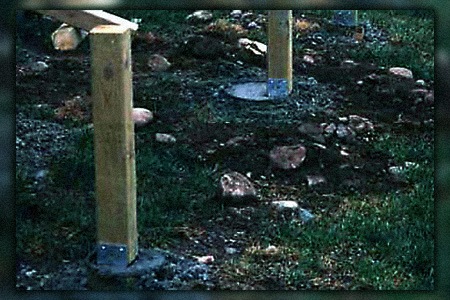
If you’re anchoring your footings to concrete, the process is mostly the same. There are minor changes though.
Step 1: Digging the Holes
Start by digging 8-inch diameter holes with a depth of 6 inches below the frost line. The frost line will depend on your particular area.
Step 2: Installing Tubes
The next step is installing the concrete tubes. Simply slide the concrete tubes to the bottom of one hole and cut it off from 6 inches above the ground level. Fill the space between the tube and soil with gravel.
Alternatively there are feet (aka a footing) that your pergola posts can sit on and be bolted into, and then the feet are anchored into an existing concrete pad. If you go this route you don't need to mix concrete at all.
Step 3: Preparing Concrete
Preparing concrete is the same process whether you’re anchoring to the ground or concrete. Just make sure to follow the package directions carefully.
Step 4: Filling Concrete Tubes
Fill the tubes with the wet concrete you just prepared. Place the galvanized post anchor into the concrete while ensuring it’s square with the shape. It also needs to be vertically and horizontally level. The horizontal plate on which the post will rest needs to be completely level with the top of the concrete.
Step 5: Let It Dry
Have a little patience here. Let the concrete dry completely. After that, set one horizontal plate in the concrete. Make sure it's plumb. You can have someone help you with this. Drill holes for the bolts in the bottom of the posts.
Step 6: Install Bolts
Pass the bolts through the posts and tighten them. Again, you must make sure that the posts are plumb. Repeat the same process for other posts. Make sure to use the right types of bolts that can bear substantial pressure. Some will likely be provided with your anchors.
Pergola Footing Options
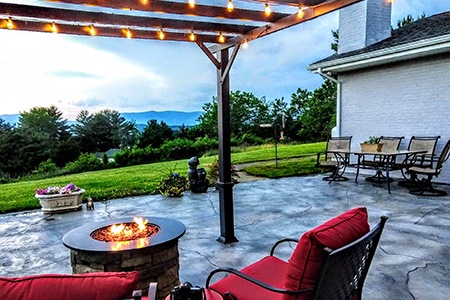
A good thing about pergola footings is that you get a lot of options. There are 5 traditional pergola footing options, to be exact. So, you have the freedom to choose the one that works for you. Let's dive into the footing options available.
1) Post Set in Hole
This is a simple option. The post will be set inside a hole and on a flat concrete footing within the hole. With this style, the post is buried in the ground. So, they need to be treated for ground contact.
2) Post with Pyramid Footing
The second option is pretty similar to the third. But the major difference is that here you will use a pyramid-shaped concrete footing instead of a flat one. This concrete footing is above-ground and will need to be anchored to the ground in some fashion, preferably to the concrete slab beneath the entire pergola.
Alternatively, the post can continue through the footing and into a hole in the ground in which a flat concrete platform has been created. The pyramid footing, in this case, is simply decorative. In another way of doing it, the pyramid footing itself will extend down into the ground instead.
3) Flat Footing
The base is concealed with this option. You have a flat footing with a solid concrete pier penetrating the ground. This is a sophisticated style. It uses wide footings with tubular forms to pour the cement. It is then attached to the concrete footing with anchoring equipment.
4) Stepped Footing
This is very similar to the previous option. The difference here is that the top of the flat footing has another pedestal on it, and as many as 3 smaller ones growing upwards like a pyramid shape, except instead of smooth sides, its several smaller flat layers stacked on top of each other.
5) Bell Form Footing
In this option you have a bell-form footing with a solid concrete pier, very similar to the pyramid footing. The post base is also sealed for a seamless look. And this design also uses a wide footing with tubular forms.
Pergola Footing Requirements
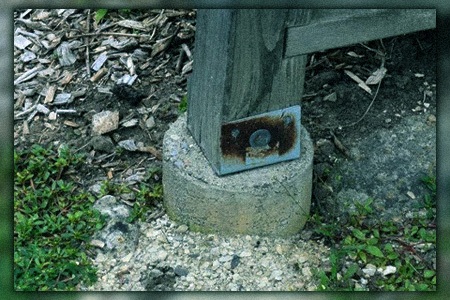
The thing you need to know first about a pergola footing is how many you would need. Having 3 to 4 footings is generally the best.
Please check your local building codes to ensure you're building this in the safest and legally required manner. We can't tell you precisely what is required here due to the specifics changing not only in every state but sometimes per city, even.
But there are some important requirements you need to keep in mind. These are just simple best practices that will give you a solid anchor point.
Mixing & Digging Cement
Okay, if you have chosen cement. The diameter is really important here. You need to ensure that the holes you dig are big enough for the diameter of the pier. This is a very important requirement if you want a perfect installation.
Setting It Up Correctly
There are multiple ways of installing pergola footings. Some might take more time and money. Others will take a little less. Ensure that the footings perfectly support the structure. That’s the main goal here.
As we mentioned before, 3 to 4 footings are good enough. The right technique and proper installation are especially important for deck foot anchors. They do not take that much time or money.
You can finish it up within just 40 minutes or so. No method is wrong. Just ensure your footing will hold.
Back Filling & Digging
Some might choose to set the posts in the ground directly. In this case, the posts need to be treated. They need to be treated for ground contact specifically. A bit of warming, though. They still won't hold up long compared to a post that has been set above the grade with the right hardware.
Pergola Footing Depth
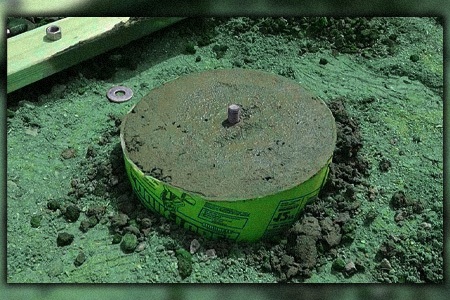
Another very important aspect to check is the footing depth. The depth of the footing is a bit tricky. It’s hard to give a definitive answer since it depends on a couple of things. You need to check the soil type as well. That’ll also dictate the depth.
All is not lost, though. There is a general rule of thumb. It is always a good idea to have the depth be at least ¼ the length of your pergola. This will give it some good structural rigidity. Of course, all the holes for the posts should be the same length.
You should even pack down the dirt firmly around the footings too! Use a shovel or tamper for this.
Pergola Footings are a Must!
There you have it. Now you know all you need to know about a pergola footing. When installing footing for your pergola, you need to ensure that you use the right depth. There are a lot of options. You might want them in-ground or on concrete. Choose which one works for you. But ensure you use the right anchoring hardware and technique to have a solid installation.



